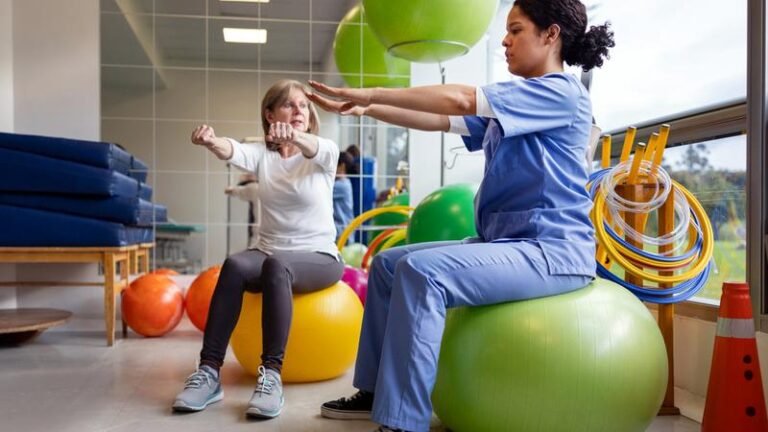In rehabilitation, where the journey from pain to progress often resembles a winding road, your pursuit of effective recovery solutions is paramount. As a medical professional or dedicated caregiver, you are acutely aware of the complexities of severe injuries.
Whether looking for a personal injury attorney Buffalo NY, this article delves into the latest innovative rehabilitation techniques to address intricate injuries, offering insights into cutting-edge therapies and methodologies.
Understanding Complex Injuries: A Comprehensive Overview
The Nature of Complex Injuries
Complex injuries often involve multiple systems or parts of the body, such as bones, muscles, and nerves. These injuries can result from high-impact events, such as car accidents or sporting mishaps, requiring nuanced treatment approaches.
Factors like the severity of the trauma and the individual’s overall health significantly influence recovery outcomes. Understanding the specific mechanisms of injury is crucial for tailoring rehabilitation plans.
Challenges and Considerations
Rehabilitation of complex injuries presents numerous challenges, including managing pain, restoring function, and preventing complications. The intricacies of these injuries necessitate a multidisciplinary approach, often involving specialists in orthopedics, physical therapy, and occupational therapy. Focusing on comprehensive care, including emotional support and patient education, can optimize recovery, leading to long-term progress and improved quality of life.
The Role of Pain Management in Rehabilitation
Understanding the Importance
In the journey from pain to progress, pain management plays a pivotal role in rehabilitation, especially for complex injuries. This crucial element alleviates discomfort and enables patients to engage actively in therapeutic activities. The rehabilitation process may be hindered without effective pain control, leading to prolonged recovery times.
Techniques and Approaches
Various pain management strategies, ranging from pharmacological to non-pharmacological approaches, such as physical therapy and cognitive-behavioral techniques, can be employed. These methods aim to reduce pain perception, improve functional ability, and enhance the overall quality of life.
Integrating Multidisciplinary Care
Collaboration among healthcare professionals ensures a comprehensive approach to pain management. By integrating the expertise of physiotherapists, occupational therapists, and psychologists, patients receive tailored care that addresses both physical and psychological aspects of pain, promoting a holistic recovery.
Cutting-Edge Rehabilitation Techniques for Complex Injuries
Harnessing Technology for Recovery
Innovations in rehabilitation are transforming the landscape of recovery for individuals with complex injuries. Virtual reality (VR) provides immersive environments that engage patients in therapeutic exercises, thereby enhancing both motivation and outcomes. This technology simulates real-world scenarios, aiding in cognitive and physical recovery.
Regenerative Medicine Approaches
Regenerative medicine is another frontier, utilizing stem cell therapy and platelet-rich plasma (PRP) to foster tissue repair and regeneration. These techniques are emerging as effective options for injuries that traditionally take a long time to heal, such as tendons and ligaments.
Personalized Rehabilitation Plans
Personalized rehabilitation plans incorporate data analytics to tailor treatments to individual needs. Through continuous monitoring, therapists can adjust exercises and therapies in real time, ensuring optimal recovery. These personalized plans are pivotal in addressing the unique challenges of each patient’s injury, promoting efficient and effective healing.
Technology’s Impact on Injury Rehabilitation Progress
Advanced Imaging Techniques
Technology has revolutionized injury rehabilitation in recent years, ushering in a new era of advanced imaging techniques. MRI and CT scans offer detailed visualizations of injuries, enabling medical professionals to tailor rehabilitation programs with greater precision. These images help identify the specific nature and extent of an injury, enabling more accurate treatment plans and faster recovery times.
Wearable Technology and Monitoring
Wearable technology plays a crucial role in rehabilitation by continuously monitoring a patient’s progress and providing valuable insights. In real time, devices like smartwatches and fitness trackers record vital signs, movement patterns, and exercise compliance. This data enables therapists to adjust treatment protocols dynamically, ensuring that each step of the rehabilitation process is tailored to the individual’s specific needs.
Virtual Reality in Therapy
Virtual Reality (VR) transforms rehabilitation by providing immersive environments that engage patients in therapeutic exercises. VR can simulate real-world scenarios, enhancing motivation and adherence to exercises. This innovative approach not only aids physical recovery but also supports cognitive and emotional rehabilitation, offering a holistic recovery experience.
Final Thoughts
As you conclude your exploration of innovative rehabilitation techniques for complex injuries, it becomes evident that embracing cutting-edge methods is crucial for advancing recovery outcomes. Whether looking for a personal injury attorney Buffalo NY, by integrating advanced technologies and personalized approaches, you empower yourself to alleviate pain and reclaim strength and functionality.
